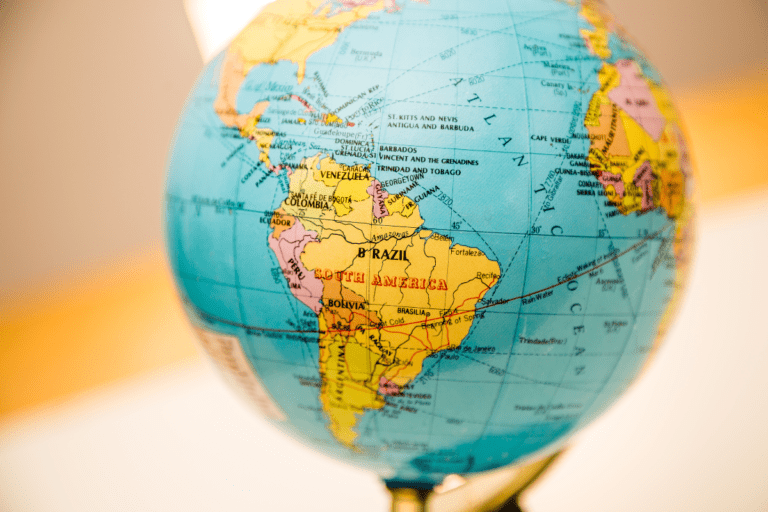Last updated on October 21, 2022
Paris, France (aka the City of Light or the City of Love), has many exciting and interesting things to do and places to explore! Paris is a city of romantics, history, fashion, culture, and art, and you can’t forget the delicious baked goods on every street. But how much knowledge do you have about the city? There are so many fun facts about Paris to uncover.
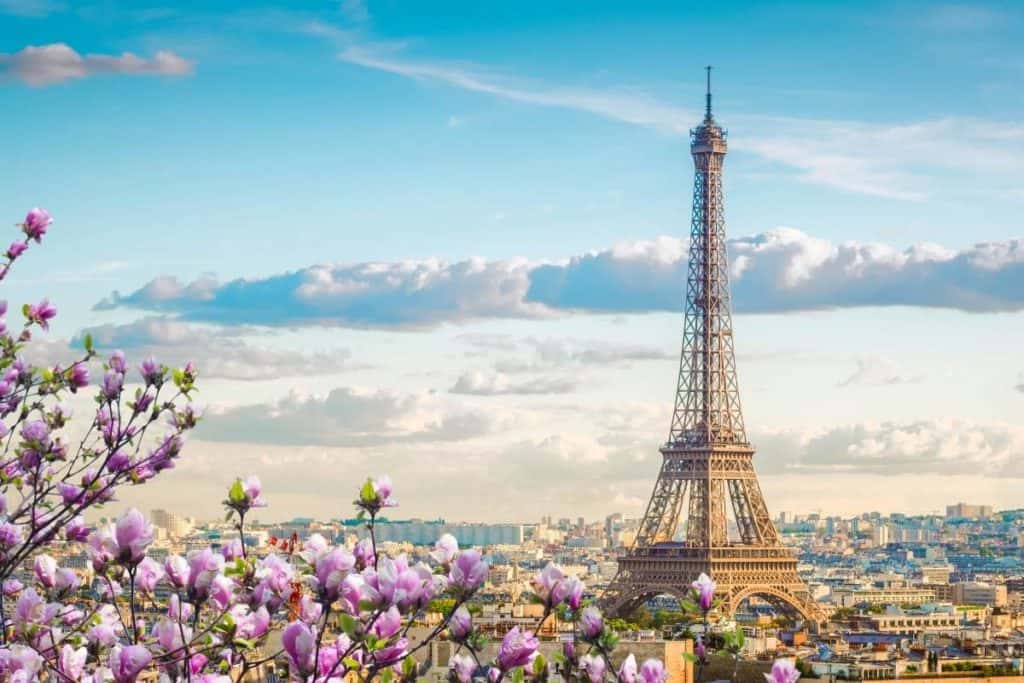
Full of iconic architecture, the city of Paris also has a tumultuous history. As France’s capital and a major European city, the Paris facts uncovered here will hopefully bring out your love for this beautiful city and it won’t lead to any Paris syndrome (keep reading to find out what that is!).
Are you an expert on Paris? Then go ahead and test your knowledge with our quiz about Paris, or if you’re not quite ready for that, read on to learn some facts we bet you didn’t know.
70+ Fun Facts About Paris, France
History
~ The area that is now called Paris was founded in the 3rd century B.C. on île de la Cité by a community of Celts.
~ Paris wasn’t always called Paris! When the Romans conquered the area that is present-day Paris in 52 BC, the City of Light was called Lutetia.
~ The Montparnasse district in the 14th arrondissement is famous for being a popular home to writers (like Ernest Hemingway) and artists in the 1920s and 30s.
~ The Metro system opened in Paris in 1900. As of 2022, it has a daily ridership of approximately 7 million people throughout the entire city.
~ Each of the metro stations in Paris has a historical theme. The famous names used and the style of the metro stop itself will sometimes clue you into the area’s past. Louise Michel, a famous Parisian anarchist of the late 1800s, is the only stop that’s named after a female.
~ The French capital may be famous for beheadings but you won’t find a guillotine in the streets of Paris (anymore). If you’re curious about where one was, at the corner of Roquette and La Croix-Faubin street, you will find a concrete marker of where a guillotine was built in 1851 in front of a spot that was once a prison. As the capital of France, Paris held a lot of public executions.
~ The Marais is now one of the most trendy and quirky neighborhoods of Paris, but it was once a swamp! It was drained and developed in the Middle Ages.

Culture
~ Paris has the moniker “the City of Love” as well as “the City of Light”.
~ There was a Parisian law imposed in 1800 that said women could not wear pants. Although it wasn’t actually enforced in modern times, the law was not formally abolished until 2012!
~ For decades people would leave “love locks” on the Pont des Arts bridge, a footbridge that crosses the Seine from the Left Bank to the Louvre. Love locks were a tradition of sweethearts inscribing their names or initials on a padlock, attaching it to the bridge, and then throwing away the key as a way to permanently seal their love. Unfortunately, the sheer amount of padlocks was starting to impact the structural integrity of the bridge so all the padlocks were sadly removed in 2015 and this is no longer allowed.
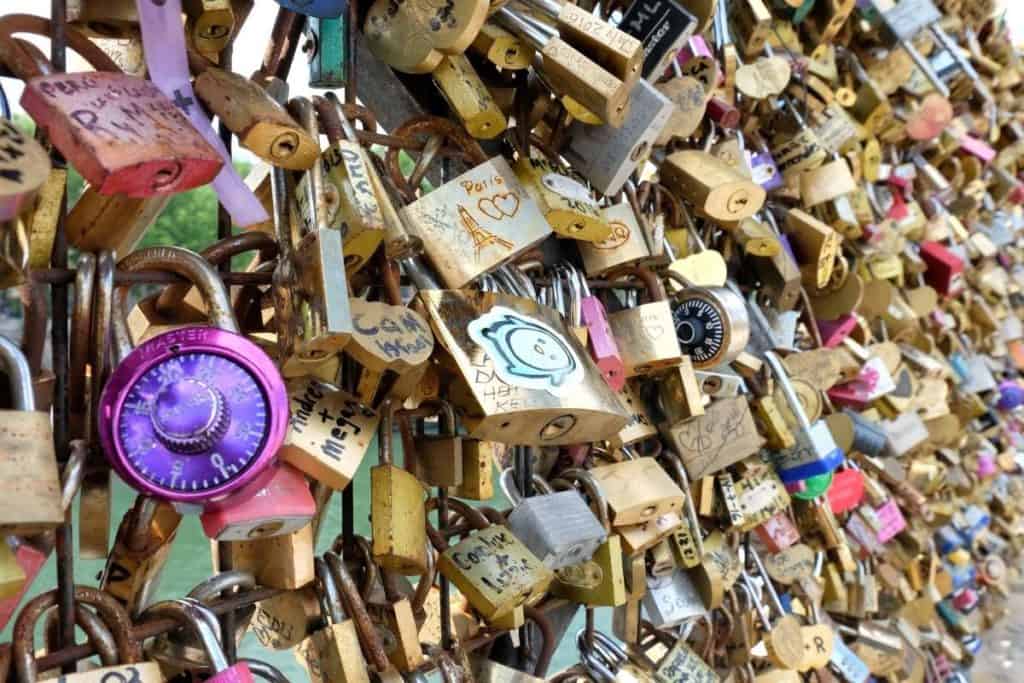
~ Paris is home to one of the world’s oldest cabaret, Paradis Latin, which Napoleon Bonaparte founded in 1802.
~ For comparison, the more well-known famous cabaret in Paris Moulin Rouge, was founded in 1889. The windmill façade of Moulin Rouge is an iconic marker in Paris.
~ French people do not do French manicures. It would be rare to see someone wear the famous nude nails with a white tip in Paris, it is usually associated with the United States, so much so that it is sometimes called “American manicure”.
Food and Drinks
~ Paris has the largest wholesale food market in the world. Called the Rungis Market, it is an exceptional place that welcomes thousands of visitors every year.
~ The classic Bloody Mary cocktail was invented in Paris in 1921. A Bloody Mary is made with vodka spirits, tomato juice, lemon juice, Worcestershire sauce, tabasco sauce, horseradish, and celery salt. It is served in a pint glass with a lemon wedge, celery stick, or pickled green bean to garnish. Fun Fact about Paris: Legend says that this popular cocktail was made for the famous novelist Ernest Hemingway! Hemingway requested a drink that didn’t smell like alcohol, so he was given vodka mixed with tomato juice.
~ Escargots (snails) are famous French delicacies. Escargots are so beloved in France, that it is believed that over 500 million snails are eaten every year in France!
~ If you want to sell baguettes in Paris there is a law that mandates that you have to follow an exact recipe.

~ Some foods are protected and are considered authentic only if they come from that particular region in France. For example, if you like bubbly, we’re sure you’re already familiar with the fact that Champagne can only originate from Champagne, France.
~ Although made famous by France, macarons are actually considered to be of Italian origin, dating back to the 8th century. The popular belief is that they were introduced to France in 1533 when Queen Catherine de’ Medici of Italy married King Henry II of France, and her pastry chefs brought the delicate macaron recipe with them.
~ An interesting fun fact about Paris (and French!) food, is that there are different cuisines throughout France, one for each region. Paris, as the capital of France, and located in a central region, has almost all the cuisines from across the country.
~ It is common in North America to call main dishes entrées, but the French refer to appetizers or starters as entrées. The word is derived from the French word “entrer”, meaning to enter hence considered an appetizer.
Paris Attractions and Landmarks
~ Paris has many attractions and landmarks to discover. Historically, however, the most visited attraction in Paris isn’t a museum but the famous Notre Dame Cathedral.
~ The Basilica of the Sacred Heart of Paris, commonly known as Sacré-Coeur Basilica and often simply Sacré-Coeur, is a Roman Catholic church and minor basilica in Paris, France, dedicated to the Sacred Heart of Jesus. It is located on a summit in Montmartre, resting on the highest point in the city.
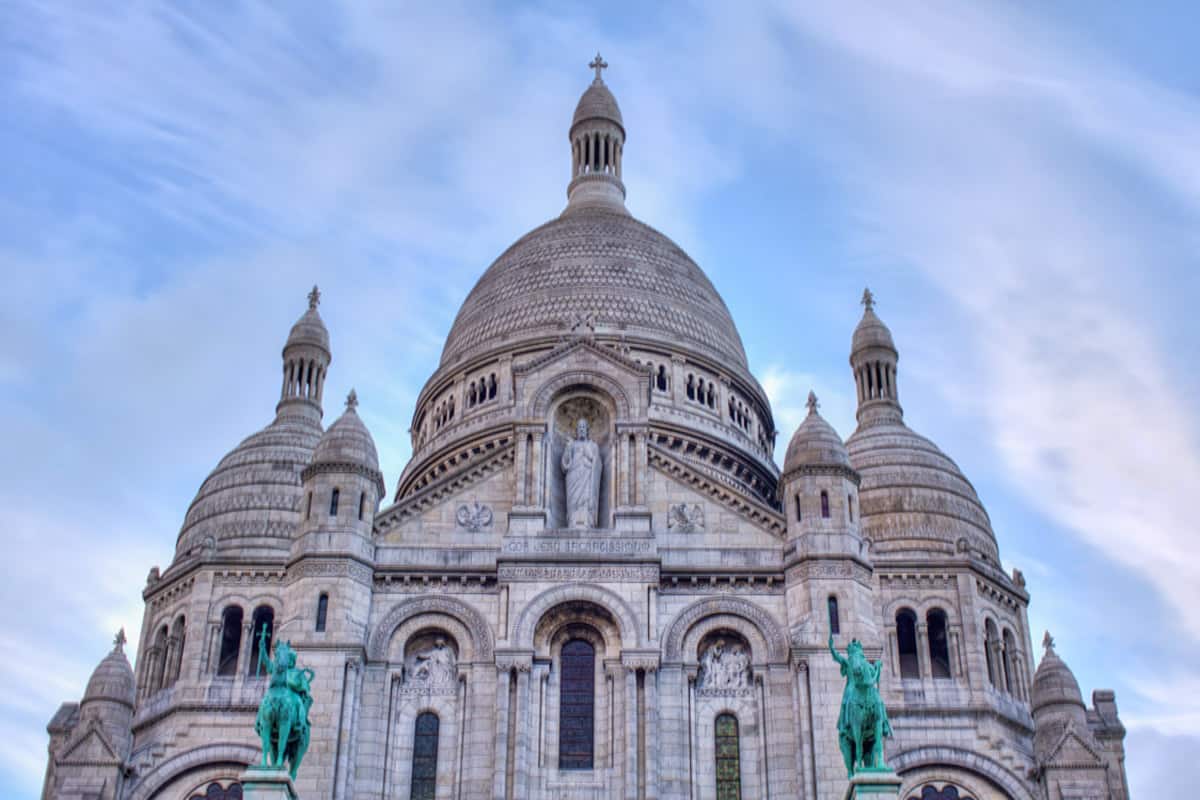
~ Putting the FUN in fun facts, as of 2018, the second most visited attraction in the French capital of Paris was Disney Land Paris.
~ The Île-de-la-Cité on which Notre Dame Paris now stands was once a temple in the Roman city of Lutetia. Pieces of a sculpted altar dedicated to Jupiter and other deities were discovered during an excavation under the choir.
~ The Notre Dame Cathedral contains one of the oldest surviving wood-timber frames in Paris, involving around 52 acres of trees that were cut down in the 12th century. Each beam is made from an individual tree. For this reason, the lattice of historic woodwork is nicknamed “the Forest.”
~ All 20 of the bells in the Notre Dame Cathedral were melted down during the French Revolution to make cannons. Only the colossal 1681 bell named Emmanuel was spared. Although the bells were replaced, they weren’t the same quality, and it wasn’t until 2013 that a new ensemble of bells restored Notre Dame to its 17th-century sound.
~ Housed in the Louvre Museum, the world-famous Mona Lisa portrait garners over 10 million visitors per year.
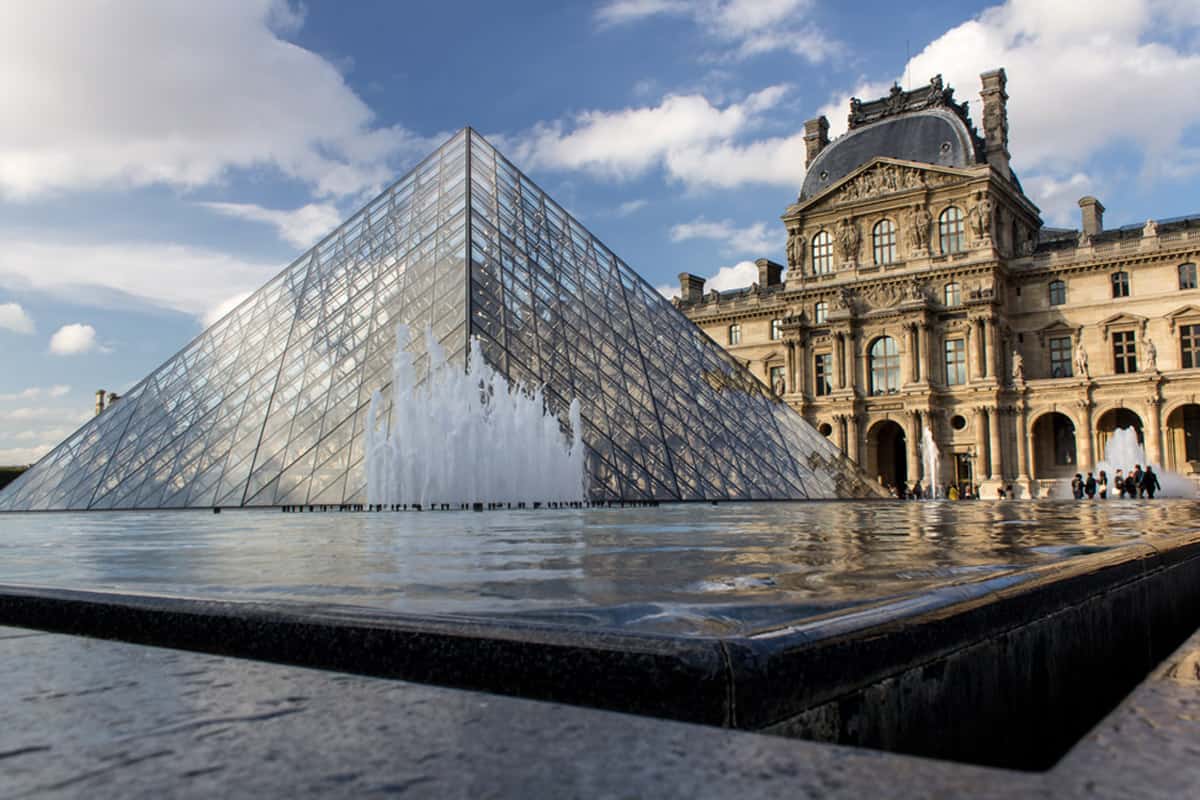
~ You can’t visit Paris without seeing the Louvre! The Louvre Museum in Paris had 2.7 million visitors in 2020, making it the most visited museum in the world.
~ The Louvre was originally a fortress. The history of the Louvre dates all the way to 1190 when it was constructed as a fortress by King Phillip II of France to protect the city from outsiders. The fortress was completed in 1202, and in the 14th century, King Charles V turned the Louvre into the royal residence. It was amidst the riots and the bloodshed during the iconic Revolution that the Louvre museum was born.
~ The world famous painting by Leonardo da Vinci, the Mona Lisa, was stolen from its home in the museum in 1911. During the time that she was missing, she catapulted into the public eye and subsequently became the most famous painting in the world. Additionally, the theft is considered the greatest art theft of the 20th century.
~ Nazis stored looted art in the Louvre in Paris during World War II. In an attempt to right the wrongs of history, since 1951, the Louvre has been trying to return the art to its rightful owners but has only been able to return 50 such works of art. The Louvre still has about 1,752 artworks that were looted by the Nazis during the world war.
~ The Arc de Triomphe was commissioned by Napoleon on August 15th, 1806 (his birthday). It was his intent for the Arc de Triomphe to honor the great French army in some way; a force that he deemed invincible after they had conquered most of Europe.
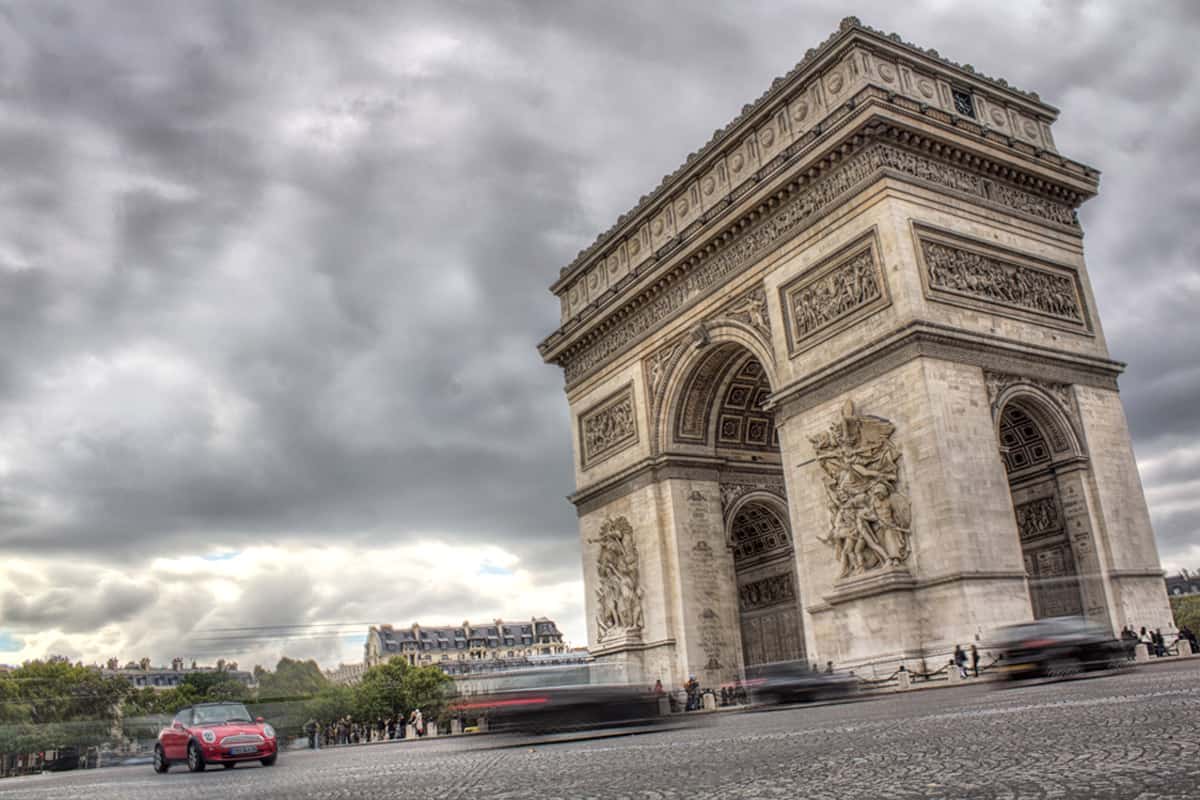
~ It took 30 years for the Arc de Triomphe to be complete. While Napoleon commissioned the monument, it was never visited by him; he passed away 15 years before it was completed.
~ Paris has its own Statue of Liberty! You might already know that the famous Lady Liberty in New York was a gift from the French. What you might know have known is that there’s a miniature statue of liberty in Paris facing the larger counterpart along with 4 other smaller statues spread throughout the city of Lights.
~ The Statue of Liberty in Paris was given to France by the United States in 1889 to commemorate the centennial of the French Revolution. It’s located on an artificial island built in the middle of the Seine River.
~ While the stunning glass pyramid in front of the Louvre in Paris is eye-catching, many are surprised to find out that there are actually five pyramids in the Louvre! Three of them are the small glass pyramids surrounding the main I.M. Pei pyramid. These three have been positioned so that they create light shafts that help highlight the museum’s collection. The fifth pyramid is the Louvre Pyramide inversée (inverted glass pyramid) in Carrousel du Louvre.
Eiffel Tower
~ The Eiffel Tower, or as the French call it, La Tour Eiffel, was designed as the centerpiece of the 1889 World’s Fair that took place in Paris. It is one of the most recognized monuments in the world.
~ The Eiffel Tower was built by Gustave Eiffel over the course of two years, two months, and five days, using 7,500 tons of iron and 2.5 million rivets.
~ Constructed for the 1889 World’s Fair, the Eiffel Tower was originally built to commemorate the 100th anniversary of the French Revolution. Upon the unveiling, Parisians called it: “A truly tragic street lamp,” a “useless and monstrous eyesore that would taint Paris forever,” and “a hideous column with railings”.
~ After fulfilling its purpose at the World’s Fair, the Eiffel Tower was supposed to be torn down after 20 years.
~ Since being built, the Eiffel Tower is painted by hand every 7 years. Each application takes around 60 tons of paint! Now hand painting the landmark is one unique way to tour Eiffel Tower.
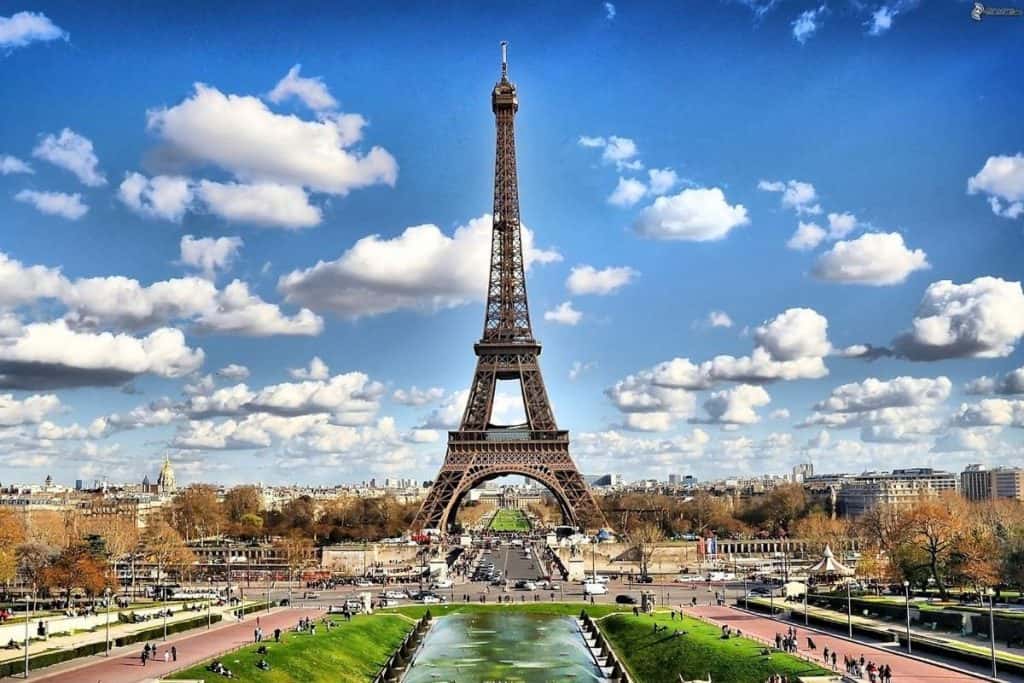
~ It is illegal for professional photographers to distribute images of the Eiffel Tower at night.
~ There’s a post office tucked into the first floor of the Eiffel Tower! Next to the gift shops, there is a tiny post office where you can mail a postcard to a loved one from the Eiffel Tower’s post office and it will be delivered with a unique postmark.
~ The Eiffel Tower moves. Wind can make the massive iron structure move, an even the heat of the sun has been shown to affect the Tower, causing the iron to expand and contract up to 7 inches.
~ There’s a military bunker underneath the south pillar of the Eiffel Tower. It is said to may connect the Eiffel Tower to the nearby Ecole Militaire via a long tunnel under Paris but has now been turned into a small museum and tour groups can explore the diminutive space.
~ This is some uniquely Paris fun! There’s a champagne bar built into the top floor of the Eiffel Tower. There’s nothing like a glass of bubbly with a spectacular view of the beautiful Paris city!
~ The Eiffel Tower was once yellow! Over the decades, the “Iron Lady” has changed her looks with the application of a spectrum of paint colors. From a reddish-brown color, to yellow, to chestnut brown, before the adoption of the current, specially mixed “Eiffel Tower Brown” in 1968.
~ At 986 feet, for four decades the Eiffel Tower was the world’s tallest structure. It would not be surpassed until the completion of the 1,046-foot Chrysler Building in New York in 1930.
~ The Eiffel Tower is the most visited paid monument in the world and receives an average of 25,000 visitors per day!
Paris Geography
~ All distances in Paris are measured from the Notre Dame Cathedral. This compass, called “Point Zero,” marks the center of Paris.
~ The city of Paris is divided into twenty arrondissements (individual municipal/administrative districts). The 20 arrondissements in Paris start at the heart of the city and continue in numerical order in a spiral fashion, just like a snail or escargot!
~ Paris has a series of underground tunnels that showcase stacked human skeletal remains. Called “The Catacombs,” the underground ossuary in Paris, France, holds the remains of more than six million people as an anonymous memorial to millions of unnamed deceased Parisians. Spooky!
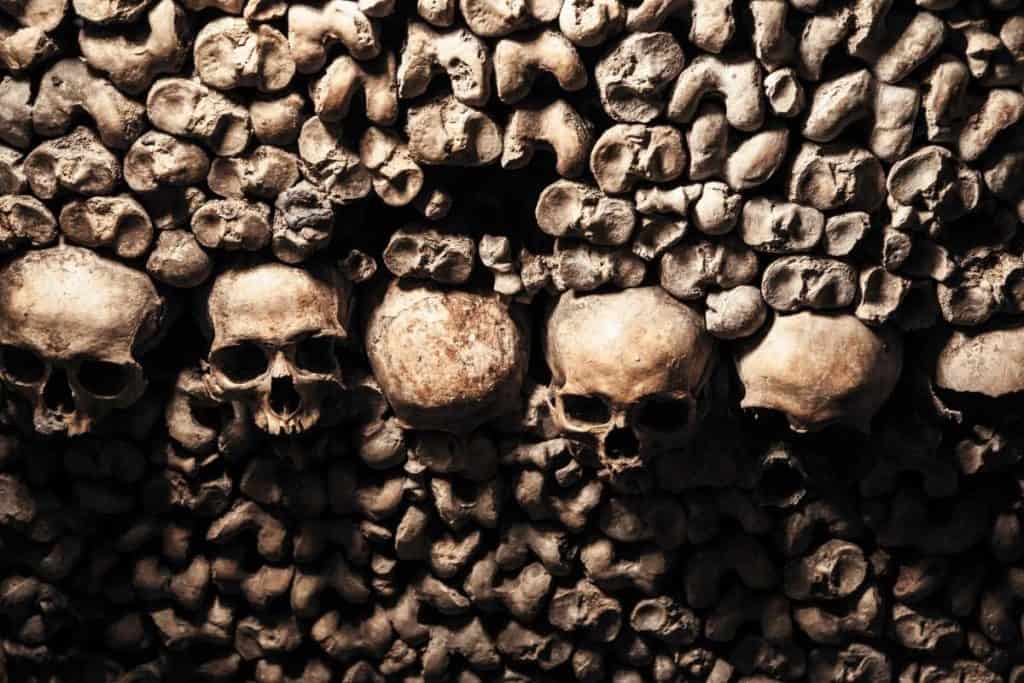
~ Paris has many bridges but built between 1578 and 1607, the Pont Neuf is the oldest standing bridge across the river Seine in Paris, France.
~ Funnily enough, the oldest bridge in Paris is called Pont Neuf which means ‘new bridge’! It crosses the Seine River in Paris and was named by King Henry III who called it ‘new bridge’ as a way to distinguish it from older bridges at the time.
~ On that note, exactly how old is the oldest bridge in Paris? The oldest parts date back to 1578.
~ Paris is located in northern central France, in a north-bending arc of the river Seine whose crest includes two islands, the Île Saint-Louis and the larger Île de la Cité, which form the oldest part of the city.
People and Languages of Paris
~ With 30 million visitors annually, Paris is one of the most visited cities in Europe and ranked second on the list of most-visited cities in the world.
~ Here are some interesting facts about Paris! The top three languages spoken are Paris, France are:
- French
- German
- Arabic
~ The first photo of a person ever taken was taken in Paris. In 1838 Louis Daguerre took a photo of his perspective in Paris and you can spot someone in one of the corners of the photo of the city. This was the first time the human form has been captured in a photo before!
~ French people smoke quite a lot. It is estimated that roughly 21% of people in the great Paris city are smokers.

~ It is customary for French people to greet each other with cheek-kissing, called ‘la bise‘. But there are some intricacies! The basic rule is that, whether they know the person or not, women are greeted with la bise by men and women alike, whereas men usually shake hands with one another. However, depending on the social setting, it can change: sometimes, it is more appropriate to shake the hand of a superior; sometimes, male friends or strangers kiss each other on the cheek. To err on the side of caution, read the room before you pucker up!
~ French people’s meals can last for hours! There is usually a ritual of multiple steps to each meal and above all else, the table is seen as a space of sociability; prompting people to sit and chat throughout the meal.
Fun Facts About Paris
~ In 2005 Hollywood film star Tom Cruise applied to become an honorary citizen of the city of Paris. The government passed a resolution to prohibit him from becoming an honorary citizen of the city due to his affiliation with the controversial religious organization of Scientology, which France has actually classified as a cult.
~ There is not one stop sign that can be found in Paris. Why such a stop sign shortage? Well, some say it’s due to Paris’s traffic laws.
~ Some believe Paris became known as “La Ville-Lumière” (“City of Lights” in French) because the city was one of the first major cities in Europe to adopt widespread street lighting. This was commissioned by Louis XIV in the 17th century to put more light on the streets as a way of restoring the city’s safety that had deteriorated due to the recently concluded wars.
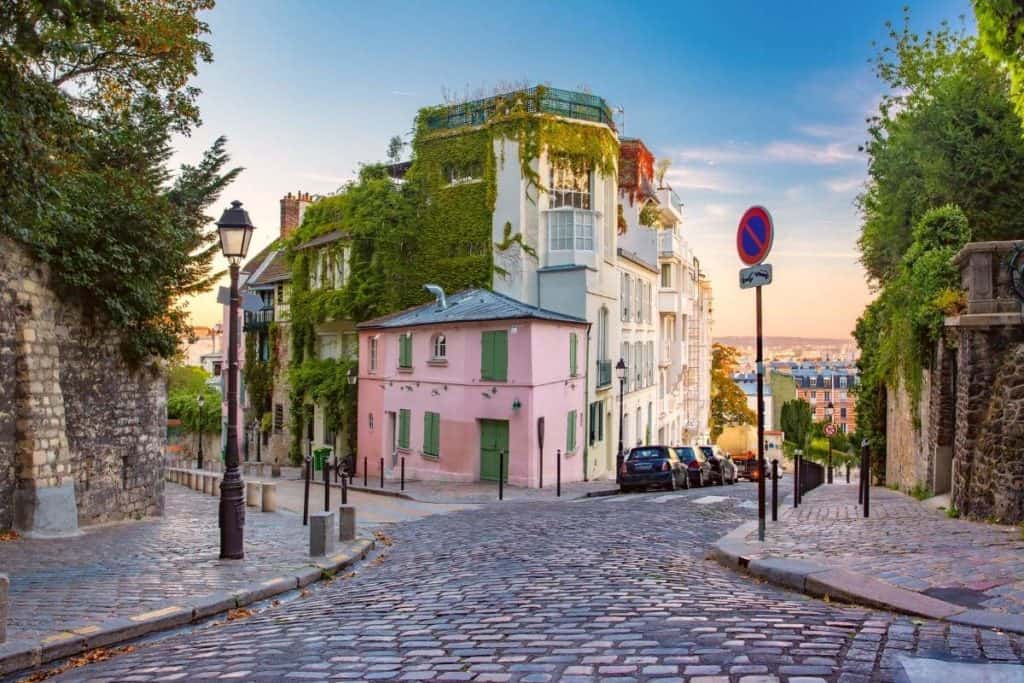
~ The French army still maintains a fleet of carrier pigeons! France is the only European country whose army continues to breed and maintain a colony of carrier pigeons.
~ Are you familiar with ‘Paris Syndrome’? It’s not actually a sickness but a particular state of mind that has been uncovered by some after visiting Paris! Paris syndrome is associated with having expectations of the beauty of the city being really high and then having a feeling of being let down afterward if it didn’t meet the expectations.
Paris Facts Summary
Paris is the capital city of France and is known as the City of Love. We hope that learning more about this exciting city and being immersed in Paris facts did not lead to any Paris syndrome, but instead leads to inspiration to visit Paris!
With a city population of 2.1 million people and bringing in 30 million visitors per year, the city is full of interesting facts about Paris to discover. Have you visited Paris yet? Don’t forget to also see our Travel Trivia: Paris quiz and see how many Paris facts you were able to retain!
Now that you’ve read the whole post, go test your knowledge in our quiz about Paris!
[adinserter name=”Block 1″]

